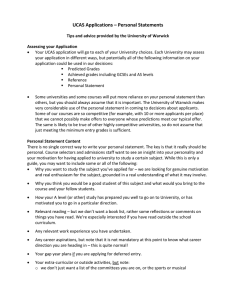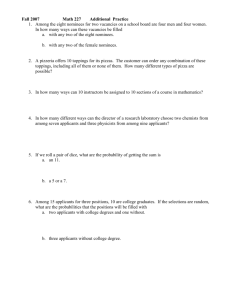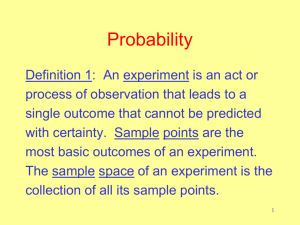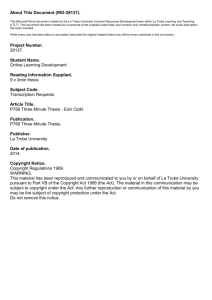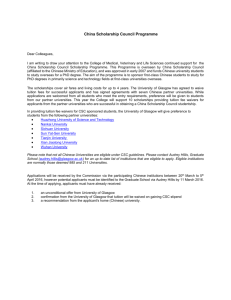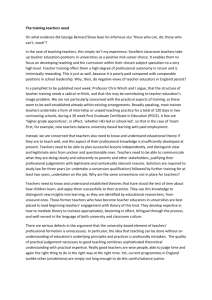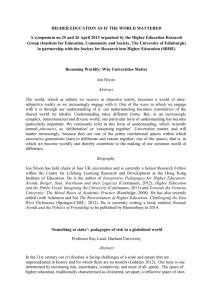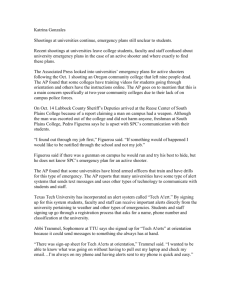Statistics Unit Lesson: Basic Probability Learning Target: To
advertisement
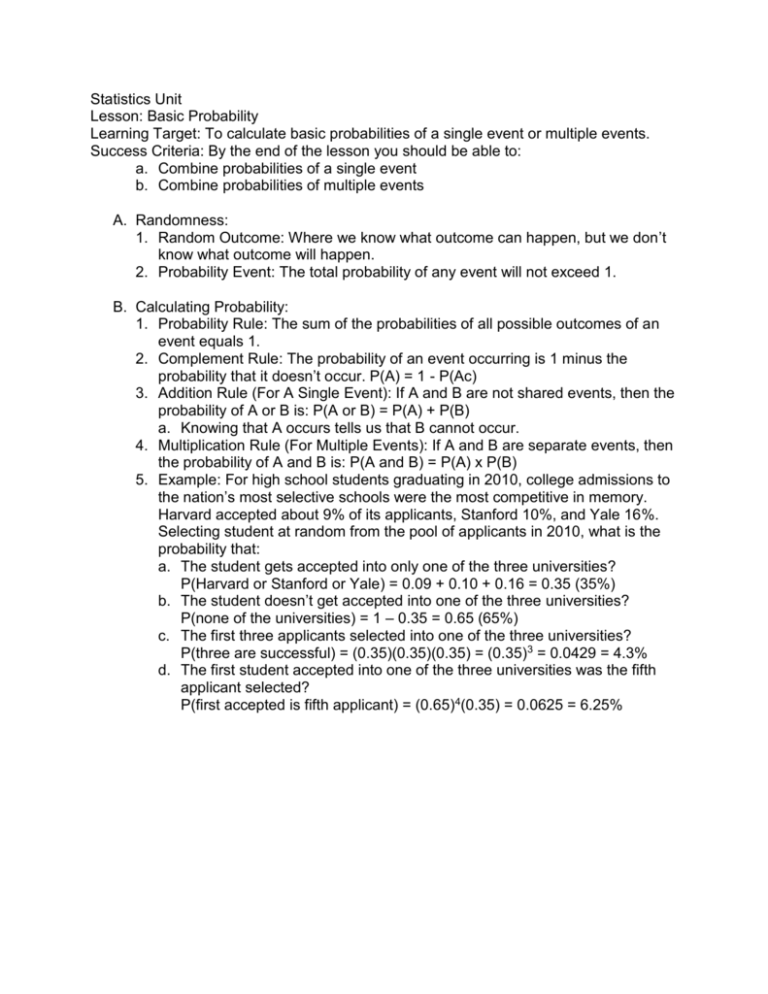
Statistics Unit Lesson: Basic Probability Learning Target: To calculate basic probabilities of a single event or multiple events. Success Criteria: By the end of the lesson you should be able to: a. Combine probabilities of a single event b. Combine probabilities of multiple events A. Randomness: 1. Random Outcome: Where we know what outcome can happen, but we don’t know what outcome will happen. 2. Probability Event: The total probability of any event will not exceed 1. B. Calculating Probability: 1. Probability Rule: The sum of the probabilities of all possible outcomes of an event equals 1. 2. Complement Rule: The probability of an event occurring is 1 minus the probability that it doesn’t occur. P(A) = 1 - P(Ac) 3. Addition Rule (For A Single Event): If A and B are not shared events, then the probability of A or B is: P(A or B) = P(A) + P(B) a. Knowing that A occurs tells us that B cannot occur. 4. Multiplication Rule (For Multiple Events): If A and B are separate events, then the probability of A and B is: P(A and B) = P(A) x P(B) 5. Example: For high school students graduating in 2010, college admissions to the nation’s most selective schools were the most competitive in memory. Harvard accepted about 9% of its applicants, Stanford 10%, and Yale 16%. Selecting student at random from the pool of applicants in 2010, what is the probability that: a. The student gets accepted into only one of the three universities? P(Harvard or Stanford or Yale) = 0.09 + 0.10 + 0.16 = 0.35 (35%) b. The student doesn’t get accepted into one of the three universities? P(none of the universities) = 1 – 0.35 = 0.65 (65%) c. The first three applicants selected into one of the three universities? P(three are successful) = (0.35)(0.35)(0.35) = (0.35)3 = 0.0429 = 4.3% d. The first student accepted into one of the three universities was the fifth applicant selected? P(first accepted is fifth applicant) = (0.65)4(0.35) = 0.0625 = 6.25%



